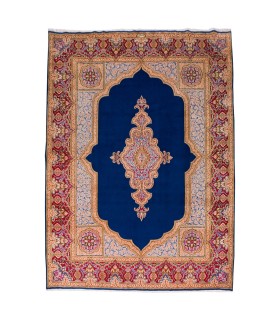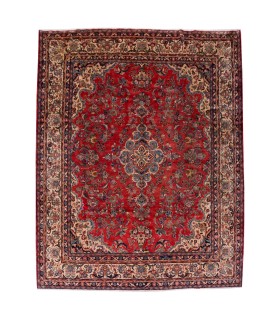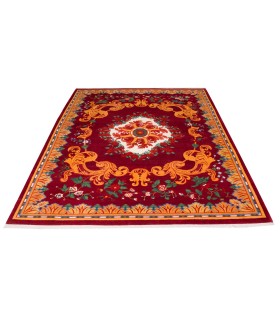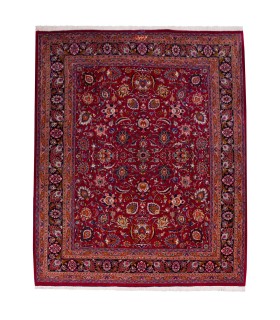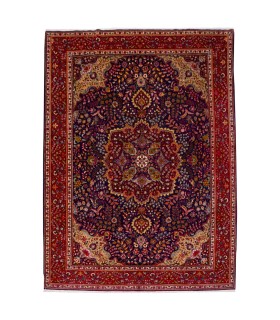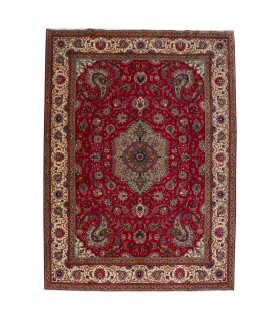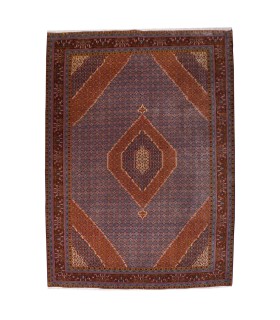This beautiful carpet is Bakhtiyari. The Bakhtiyari tribe, based in Chahar Mahaal and Bakhtiyari, is well known for their rugs and weavings. They have been weaving rugs exported around the globe since the early 19th century. The best Bakhtiyari carpets with the highest knot density are often known as Bibibaff.
This carpet made by handspun wool. Handspun and machine-spun wool have different properties that crucially affect how a rug looks. Handspun wool yarn is irregular in the tension of its twist; it is inadvertently spun looser in some places and tighter in others. One practical effect of this irregularity is that, when soaked in dye, handspun yarn absorbs less where it is spun tightly and more where it is spun loosely. Without perhaps meaning to, the spinners have created yarn that, when dyed, is never uniform in color.
This carpet has floral design. Floral design is one the most common designs in Persian carpets. Gül (Persian gol "rose"), is the name given to a floral motif on oriental carpets, for example the gül-i-henna (which depicts the henna plant) and gül-i-frank (french rose), a French accentuated pattern, often pictured with five flowers.
Dying method of material of this carpet was traditional and all dyes which used were natural dyes. Colors of natural dyes are softer and more natural looking and longer lasting than their synthetic counterparts. Sometimes natural dyes contribute to Abrash. Since all-natural dyes are not chemically or synthetically based or fixed, no two dye lots can ever be exactly the same.
Some examples of natural dyes are:
Plant Dyes: saffron, Isparuk, oak apples etc. for yellow colors; indigo for blue; madder roots (depending on age) for various red tones, as well as henna leaves and flowers, etc.
Animal Dyes: the most important of these is cochineal and in earlier times, Indian lac, both obtained from insects. A purple dye obtained from snails was Important in ancient times.
Mineral Dyes: Karaboja for black - also iron oxide; iron sulphate for brown; copper sulphate for green, etc.
In addition, however, colors will vary with the wool quality, e.g., its fat content, as well as with the chemical composition of the water which is used for preparing the dye baths.
Data sheet
- Type
- Tribal
- Origin
- Bakhtiari
- City
- Chaharmahal and Bakhtiari Province
- Dimension (cm)
- 218 × 164 (7/15 × 5/38)
- Area (Square metre)
- 3.58
- Material
- Wool (Cotton Foundation)
- Handspun Wool
- Yes
- Dyes
- Natural / Vegetable dyes
- Layout
- All-Over
- Design
- Floral
- Border Color
- Golden
- Approx. Pile Height (cm)
- Approx. 2 cm
- Shape
- Rectangular
- Approx. Weight (kg)
- 14




























